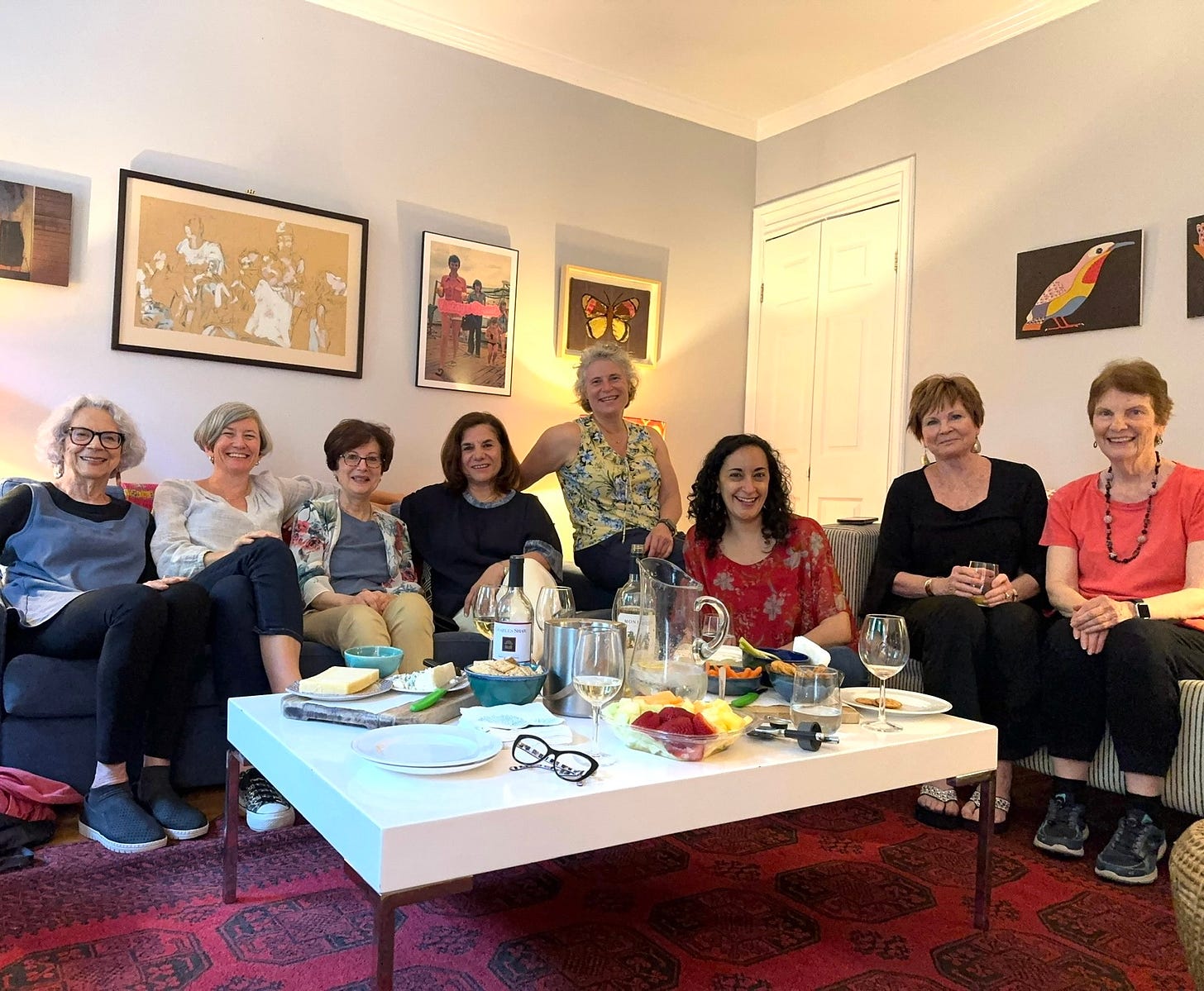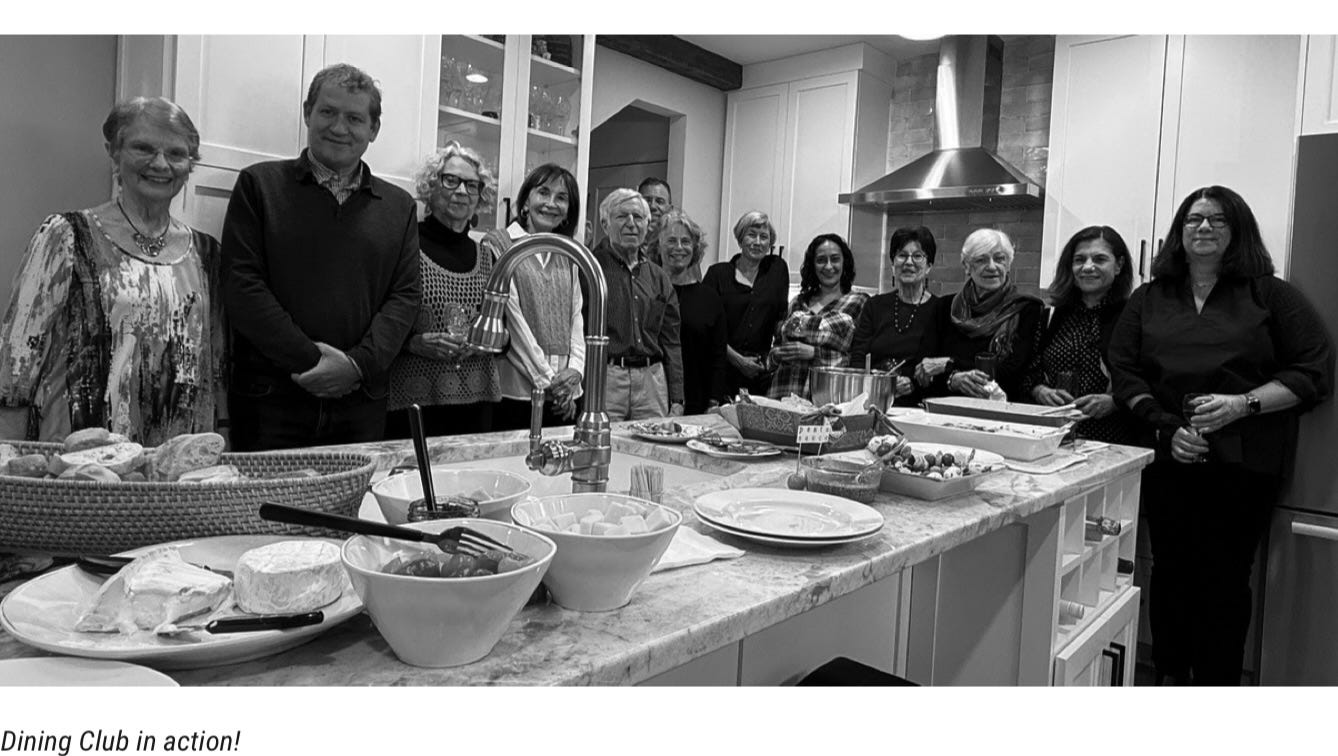June 2025
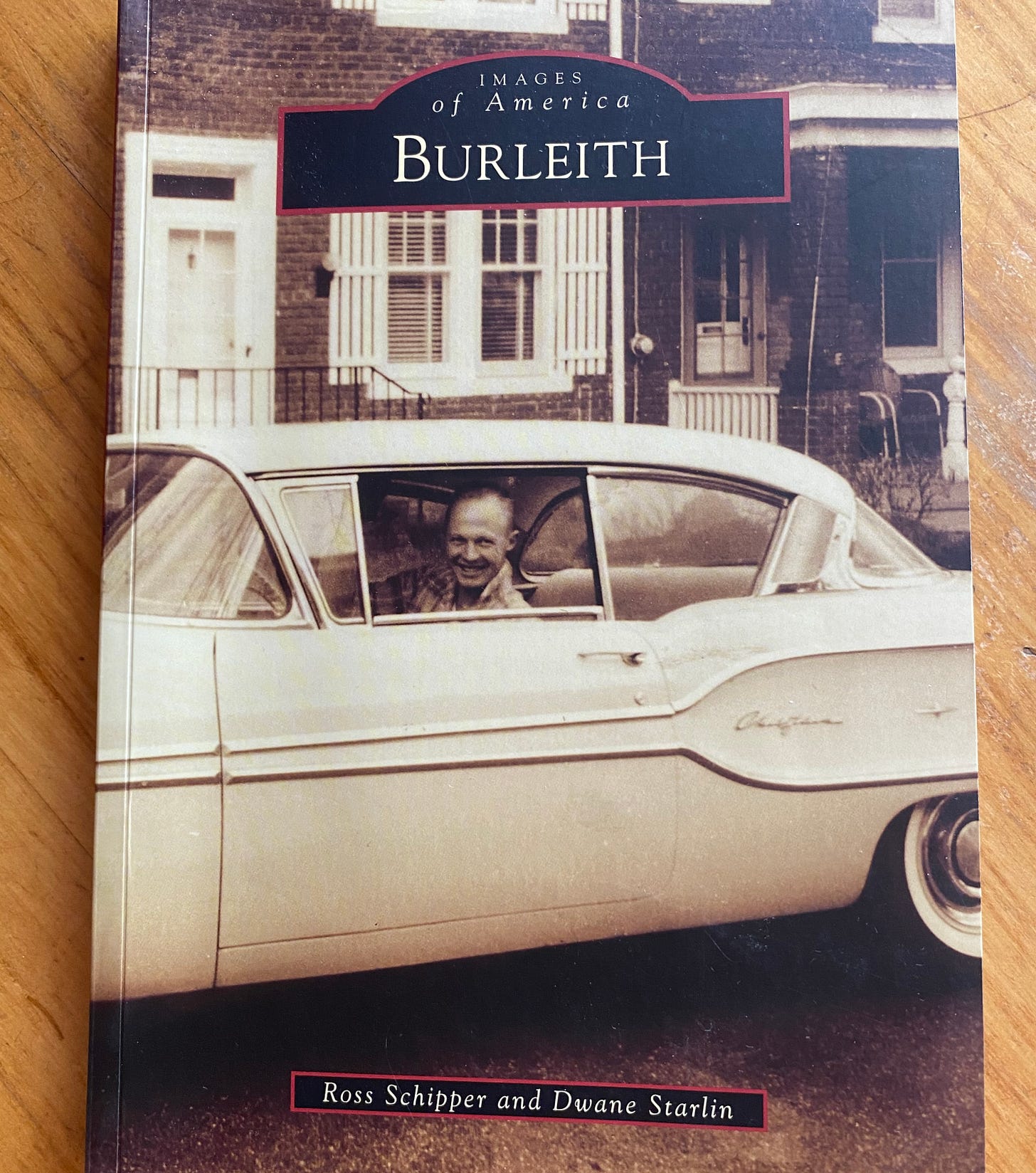
One hundred-and-two years ago, in Washington DC, the owners of newly-built homes in the neighbourhood of Burleith started a residents’ association.
Today was the summer picnic of that same Burleith Residents’ Association. Before my neighbours and I tucked into barbeque and fizzy drinks on the 37th Street green, I went on a walking tour with local historian Dwane Starlin. He and Ross Schipper quite literally wrote the book on Burleith.
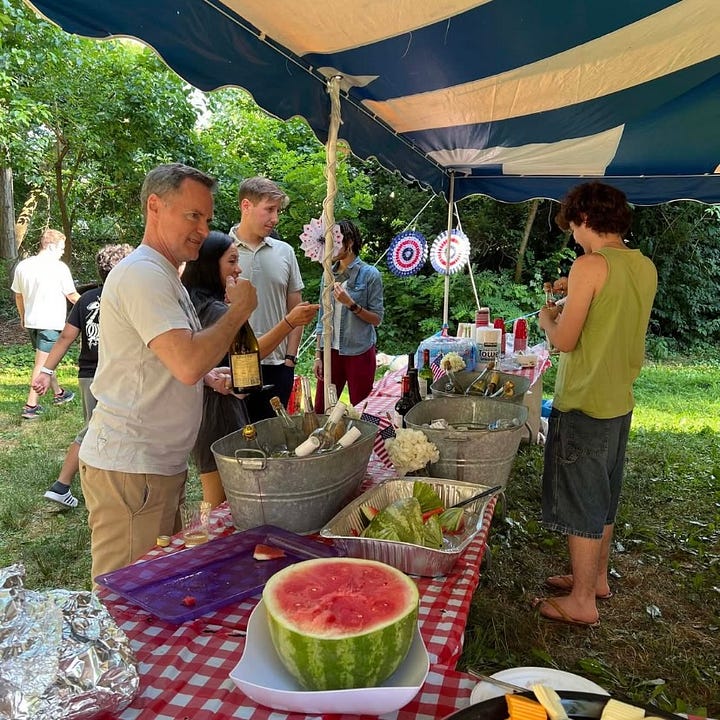
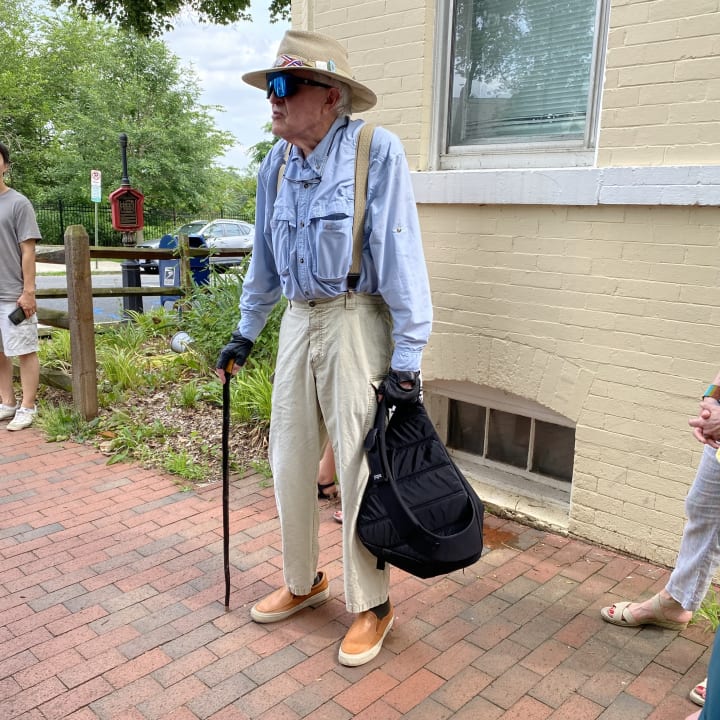
Dwane is a character in his suspenders, his sunhat with its pin-on badges and his big reflective sunglasses. He has an old-school way of speaking. Before we’ve even left the picnic area, he tells us we can ask him any question that comes to mind.
“There are three types of questions,” he says. “A bad question is one you didn’t ask. A great question is one I know the answer to. A good question is one I can’t answer. If you ask me one of those, I’ll tell you it was a good question – and someone else better jump in.”
Dwane, who’s lived in Burleith for more than a quarter of a century, is also a bugle player. He tells us he opened his door and played Taps (“lights-out”) at six every evening during “the Covid situation”.
As Dwane talks, the tour group fans itself with the map he’s provided. It’s a hot and very humid day. Dwane takes a few questions, and then we’re off.
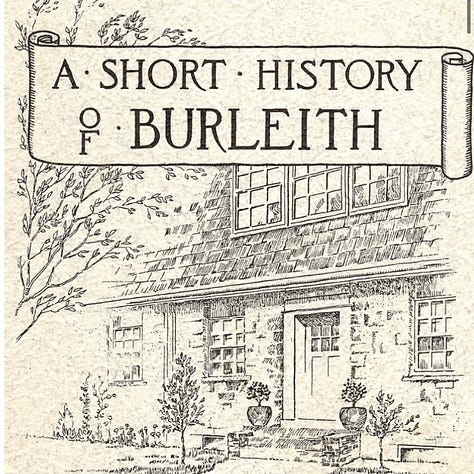
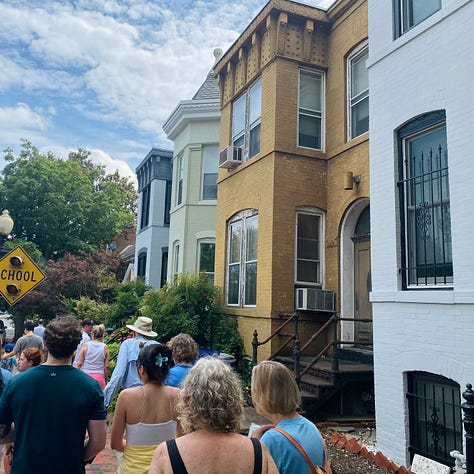
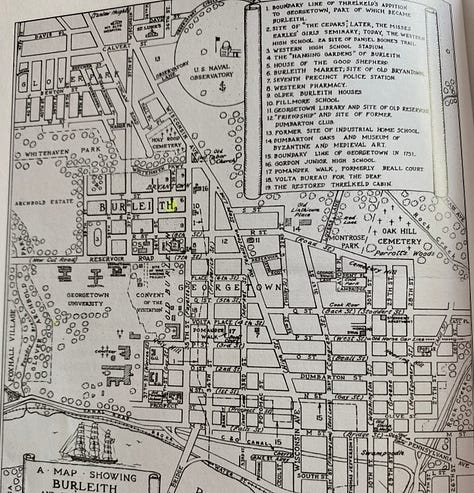
Burleith is officially part of Georgetown. It’s its own thing in the way that Park Estate and Golden Mile are parts of Rondebosch. Estate agents and home owners learn the sub-neighbourhoods of Georgetown, but no-one else need bother.
In fact, people who live in Burleith will probably tell you they live in Georgetown. Burleith is the newest and most affordable section of this famous part of DC.
“There was nothing here,” Dwane says. “Sure, there was a church, a few houses and a couple of schools. But it was mainly just open land until the developers came along in the 1920s and built all the row houses.”
A row house is what Londoners call a terrace house, and what children might call “joined-up houses”.
The developers, a real estate firm named Shannon & Luchs, marked out roads and divided the land into 525 plots. Nearly every house was “three beds, one bath”. They had wooden floors and sash windows. There was a bit of garden in the front, and a bit more at the back.
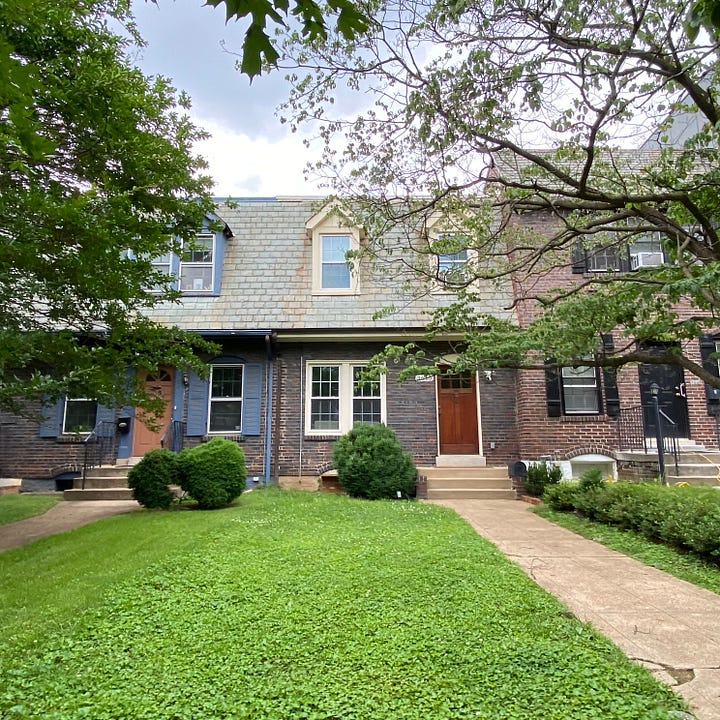
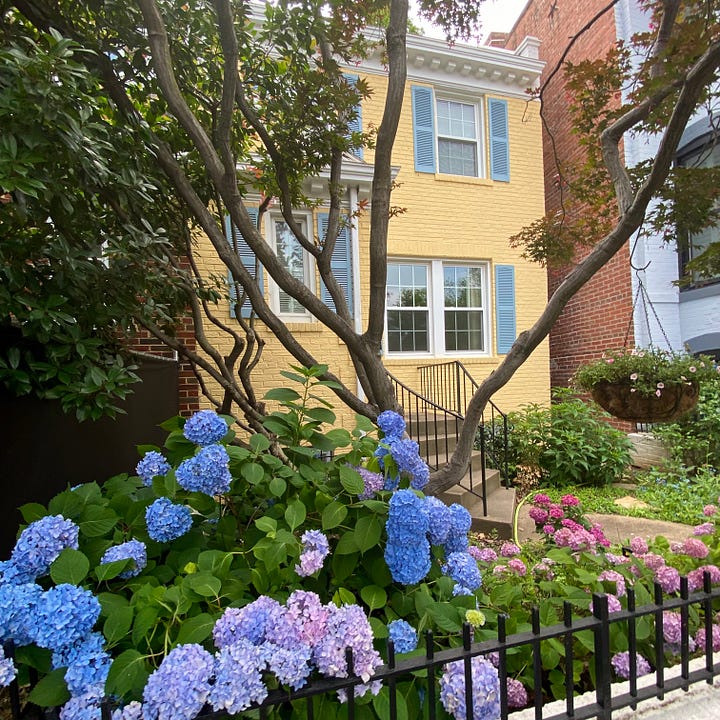
Our rental home is almost smack-bang in the middle of Burleith. It’s not as comprehensively renovated as some Burleith homes I’ve visited. I’m glad of that. I like the early 1920s aesthetic, which is very similar to our house in Kalk Bay (built in 1923).
Our row house is not the worst, either. There are some Georgetown University student digs in Burleith that are pretty basic.
The tour passes our front door. I know from Images of America: Burleith, the book that Dwane and Ross Schipper wrote about the neighbourhood’s history, that our row house was once home to the grand-niece of a “Mountain Man” named Thomas Fitzpatrick.
A “Mountain Man”! When I read that all I could see was a Victorian drawing of “Big Foot”, or “The Abominable Snowman”.
I ask Dwane about this, as a trickle of perspiration drops down my back.
“Soldiers,” Dwane says (he is arthritic, and not a young man, and it truly is a hot afternoon).
But Dwane’s bugle associates him with the military, and he is a historian, and so he continues: “Mountain Men were an elite unit. Trained in my home state of Colorado. They learnt to traverse mountains on skis – to walk uphill in skis and to ski down back slopes … to sleep out in the cold. It was to prepare them to ski into Norway, over the mountains, you see, or into Poland.”
I have another question for Dwane, but I don’t want to badger him.
“What about Thomas Fitzpatrick, the trapper?” is my question. Because Wikipedia says Thomas Fitzpatrick was an Irish-born “fur trader, Indian agent and Mountain Man”.
In the 1820s, men who ventured out into the unsettled West to kill animals for their furs did some other things too – like encountering Native American tribesmen, and cutting mountain paths.
Wikipedia’s Fitzpatrick died in Washington DC in 1854. A soldier in World War 2 would have died much later. I don’t know the age of Mrs M.G. McCarthy, the grand-niece who used to live in our house, so my question to Dwane might have been “great” or “good”. (In other words, he may or may not have known the answer.)
On our block, on the same side of the street, is one of the oldest houses in Burleith. Some believe it was the setting-off point for US explorers Lewis and Clark.
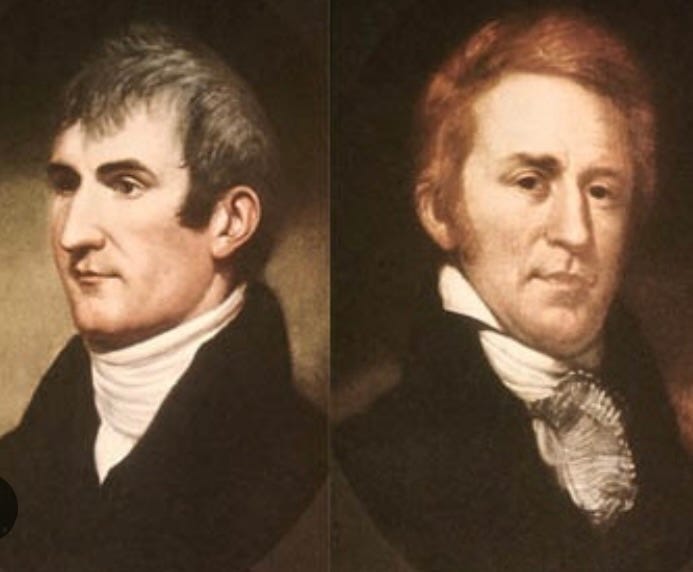
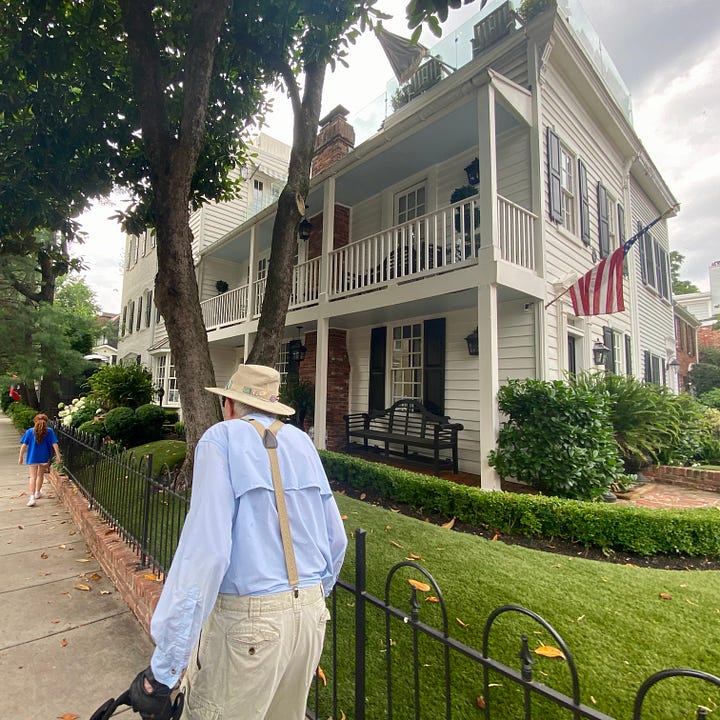
Ross and Dwane’s book has this to say: “There is a persistent neighbourhood legend that there was at one time a tavern or farmhouse located on this site, and that Pres. Thomas Jefferson met with Meriwether Lewis at that tavern in 1803.
“It was supposedly Lewis’s last stop before setting out on the Lewis and Clark Expedition crossing the newly acquired Louisiana Purchase to the West Coast. Although there has been no independent confirmation of this meeting or even of the existence of a tavern, it makes a good story.”
Never mind. Dwane knows plenty of other things for sure.
Two blocks from my home is a row house almost identical to ours. It’s not a “pop-up”: it hasn’t had an upper floor and a new facade added. The address is 1814 37th Street and it’s where Katherine Graham lived after she was married.
Graham was played by Meryl Streep in the movie The Paper. In the 1970s, Graham was the publisher and Chairman of the Board of The Washington Post. Graham and Washington Post editor Benjamin Bradlee were in charge when the paper broke the Watergate scandal, and when it published the contents of the Pentagon Papers. Graham’s memoir, Personal History, won the Pulitzer Prize in 1998.
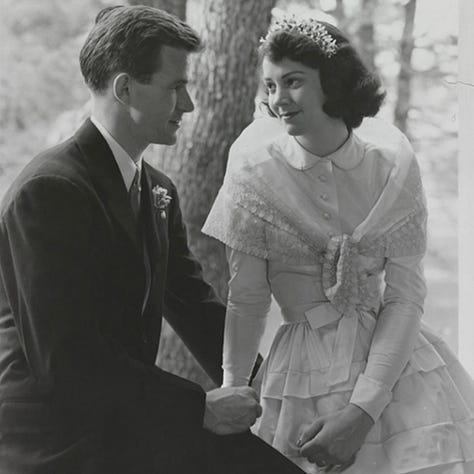

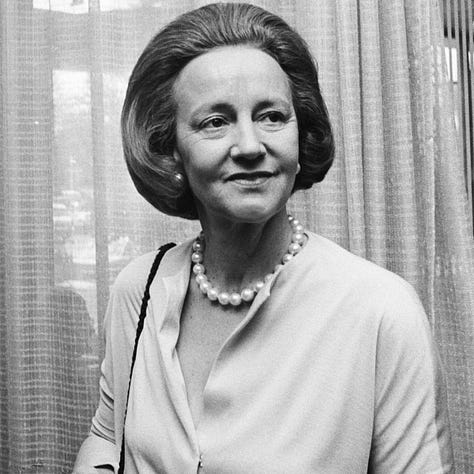
A block from our home, in the other direction, is where Billy Bush – son of George W. Bush – once lived.
And in another direction altogether, but also in easy walking distance from our front door, is the Duke Ellington School of the Arts. This high school was attended by comedian Dave Chappelle and is named for Duke Ellington, the jazz pianist who was born in 1899 and grew up here in DC.


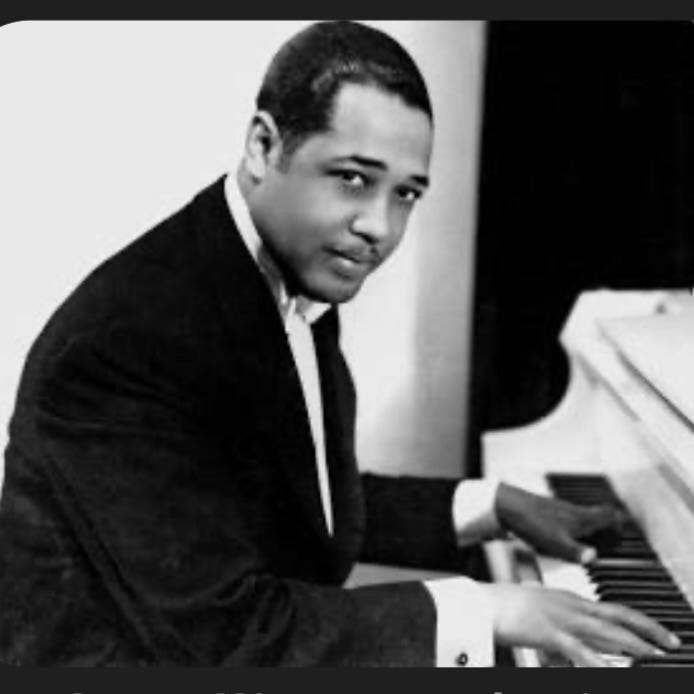
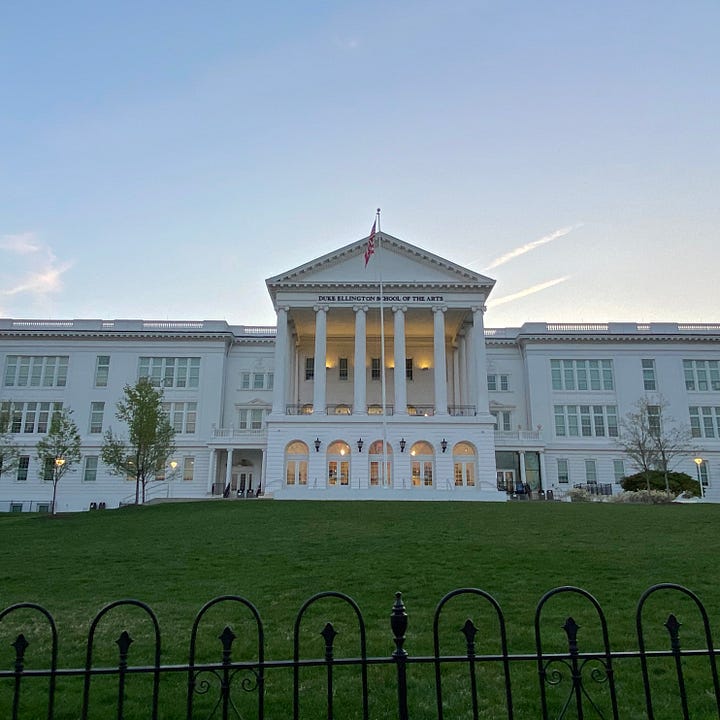
Fillmore School is one of the oldest buildings in Burleith. I drive past it daily. In the early days of Burleith the boys and girls used to line up separately to enter. It’s a block of flats now, but Hardy Middle School, next door, is full. So are the two international schools in walking distance of our house.
Dwane is pleased that young families are moving back into the area.
“In the old days, children used to play in the streets here,” Dwane says, gesturing down S Street. “Stick ball … and such.”
Dwane needs a sit-down, a cold drink and a meal. It’s time for the neighbourhood picnic.

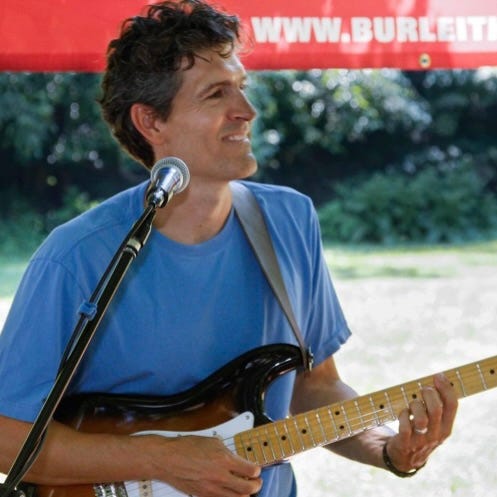
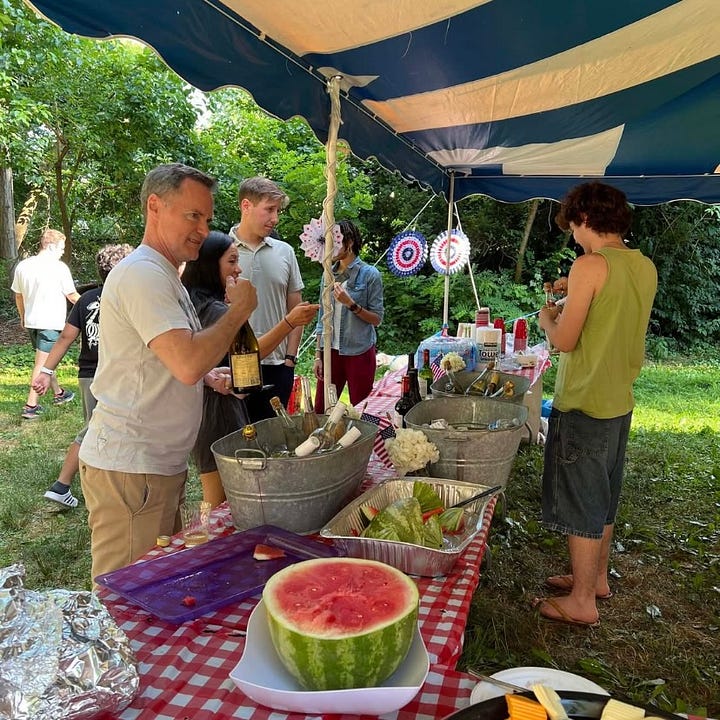
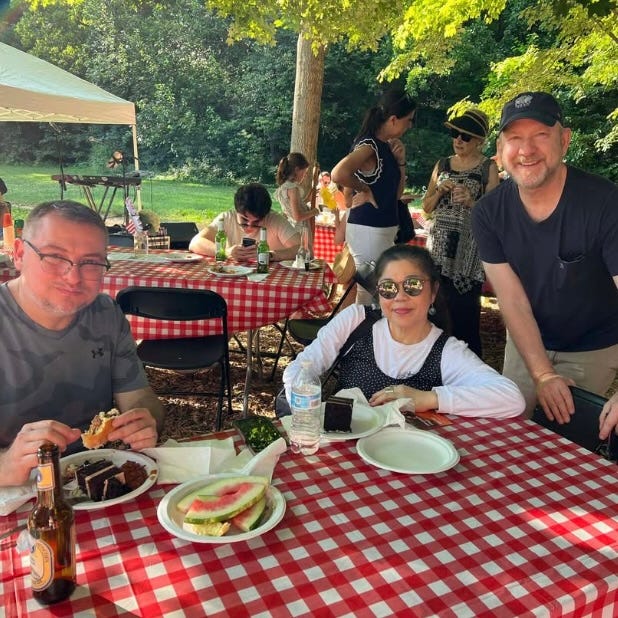
Here are two additional photos: one of me hosting the Second Burleith Book Club, and one of me and Dave at a Burleith Dining Club event. Both groups are part of the Residents Association.





